(This is an element of ‘Lighting‘)
This is a poster drawing of the range of William Sugg street lamps and matching posts from around 1880. All the lamps have open flames at this date and the posts are both decorative and substantial to match the scale of the lamps.
This illustration taken from William Sugg’s book “Modern Street Lighting” first printed in 1871, indicates the care and detail that went into every product that came from the Sugg factory and foundry. Londoners and those who have walked by the river Thames will perhaps recognize the main shaft of the right hand post with its twisted fish design which matches the magnificent pedestals still mounted on The Embankment wall with Globe Lamps. These Globe Lamps are shown in the Street Lantern section under ‘Lighting’ as are both the Lambeth & Whitehall on the posts above. The left hand post was a popular design available in no less than 4 sizes as a single post and 3 sizes with a triple head and an even larger variation 16, 18 and 20 ft tall. At least one good example exists in Hyde Park and it carries the Sugg ‘En Avant’ (In Advance) logo as shown below.
Although it may look unlikely from the photograph, if you find this post in the centre of Hyde Park quite near ‘Ranger’s Lodge’, you will discover that it is surprisingly large. The point where the tapered section meets the diamond pattern shaft is the best part of 6ft off the ground!
The two pictures above show another of these Sugg posts, this time in New Zealand which, according to the plaque is “one of 9 posts converted to carbon arc in 1915” (You can just see William turning in his grave).
Although the same pattern as the Hyde Park one it is considerably smaller and you can also see the extension added to the original post before the somewhat butchered 4-way cross at the top. (Pictures courtesy of Peter & Jenny Webb)
Here we have another ‘find’. This extraordinary post is clearly the same design as the others. It was found at Lydney Harbour on the river Severn where it acted for many years as a warning light. In the close-up you can see the remains of a circular lantern base on a typical 4 legged mounting ‘frog’.
An archive picture indicates that this was a globe lamp with part of the glazing blacked out. In its original gas lit state the open flame burner would have been mounted rigidly on the gas pipe passing up the post. Ignoring the crudely added electrical insulators, presumably from a later overhead wiring addition, the wheel and pinion are driven by a shaft passing up the outside of the post from a crank handle. The ladder was obviously mounted permanently to enable the operator to clean the lantern glass and attend to the burner – maybe even lighting it every time it was required – in this clearly exposed location. Exactly how and when it was operated has not been discovered as yet but by rotating the lantern with the crank the light could be made to flash across the harbour in the same way as a lighthouse. Under what circumstances this manual operation was used is unknown although fog seems to be quite likely — but perhaps somebody who reads this might be able to
‘shine some light’ on the mystery!
A 2013 correspondent pointed out that this post has a door which I had never taken on board! It is significant because I have never seen a door on one of these posts or, indeed, on any original Sugg gas post – in fact it is the first feature that provides an answer to the gas or electric question on any post. This particular installation on a stone built harbour wall must have presented some gas supply and connection difficulties and it is possible that a door was made specially to allow for this. I am surmising that the ladder was made permanent because the lamp was only lit when the weather was particularly bad. However, because of the ladder, anyone could have interfered with a ‘normal’ gas tap just under the lamp, so perhaps the base compartment was made to hide a further supply main cock.
The later overhead electric supply must have been particularly dangerous being easily in reach from the ladder so perhaps it too had a remote switch?
AND NOW in 2014:-
The picture below was brought to my attention by M.Ara of Lumiere de l’oeil as of course it shows the same lamp and post on either side of a harbour entrance. Although the ‘rotating’ mechanism is not present the glazing is almost certainly coloured red and green for port and starboard to guide incoming boats through the entrance.
Location Eastern Mediterranean. Izmir, Thessalonika, Gallipoli? Only Izmir had a gas works I am told but of course it is possible that these lamps were not gas. In addition I don’t think they are identical to the Lydney Harbour one although similar. The mounting is clearly different and there is no obvious gas pipe, just a 3 legged ‘frog’. The post is definitely the same, however!
Finally, on this obviously very popular Sugg post, these two pictures show other extant originals, on the left at Marlborough College with a horrid electric adaptation and on the right, more at home perhaps, in the car park of The Royal Oak public house!
BUT
In 2020 I received an email from the owner of one of these posts who had been preparing it to take a lantern in his garden with a fresh coat of ‘jade’ paint. More to the point, however, he gave its date as 6th February 1877 and included a picture of the ‘diamond mark’ which is cast in the post opposite to the Sugg, Westminster, Portcullis logo you have seen above. The diamond marks were used between 1842 and 1883 with the centre letter ‘Rd’ standing for ‘Registered’. I fully admit to having never seen this mark on these iron castings so I felt it was worth adding to this site. What you must remember is that the date of the registered design is not necessarily, in fact very unlikely to be, the date of the casting, especially with a popular and long-lived design.
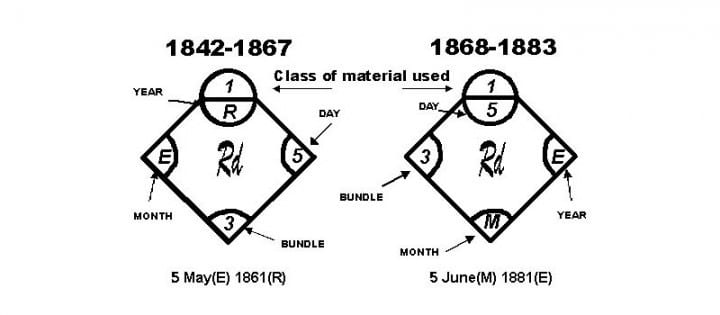
Photos by courtesy of Nigel Willoughby
It is worth noting in the original photo of the set of these posts side by side against the gas holder in the back yard of the Westminster factory, below, the notice does say “Sugg Registered Columns’.
And for one final reminder of the age of these posts – see below.
This classic photo illustrates the huge Westminster lanterns in Whitehall with their open flame burners around 1880 mounted on the same design post.
The advertising picture above shows 4 versions of the same post 8’6″, 10’3″, 12′ & 15ft ‘from ground’. This picture was taken in the back yard of the Westminster factory which backed onto the Gas Light & Coke Company gas holder which provided a convenient background. In other large pictures a piece of canvas is hung from the holder to provide a ‘plain’ background!
————————————
Many of the very decorative cast iron posts dating before about 1900 are extremely large because of the huge lanterns they supported. As explained in the section on Street Lanterns but worth repeating here, the lanterns grew progressively larger with the demand for more light because the only way to achieve this in the days before the invention of the mantle was to fit larger or multiple flame burners. The heat from these burners was sufficient to melt the solder that held the copper lanterns together if they were not large enough to allow for sufficient air movement to keep the temperature under control.
This magnificent column is one of two still in their original location at the top of Northumberland Avenue, albeit with the later Parkinson High Pressure lanterns recently refurbished and electrically operated (see below the text). The accompanying note from the Metropolitan of October 27th 1883 provides interesting detail as follows.
This is the same magnificent column photographed September 2007. The original globe lanterns were replaced by Parkinson high pressure lanterns which remained in place long after they had stopped working and have only recently been tidily refurbished and converted to electricity. The second post is near Admiralty Arch at the top of The Mall.
The ‘cherubs’ around the centre of the column have been coyly linking arms for
124 years (in 2007)!
The Northumberland Avenue Sugg Globes are illustrated and discussed in the section on Large Lanterns
There are also some delightful pictures of posts being installed on Blackfriars Bridge. Whilst the posts are not Sugg, the lamps, which are London Lamps, certainly are and the ‘manual’ form of installation shows how things have changed. These pictures are in the section which includes the London lamps. Click and wind down.
Copyright © Chris Sugg 2006-to date

![Lamp_Columns-straightened-&-reduced[8]](https://williamsugghistory.co.uk/wp-content/uploads/2014/04/Lamp_Columns-straightened-reduced8.jpg)
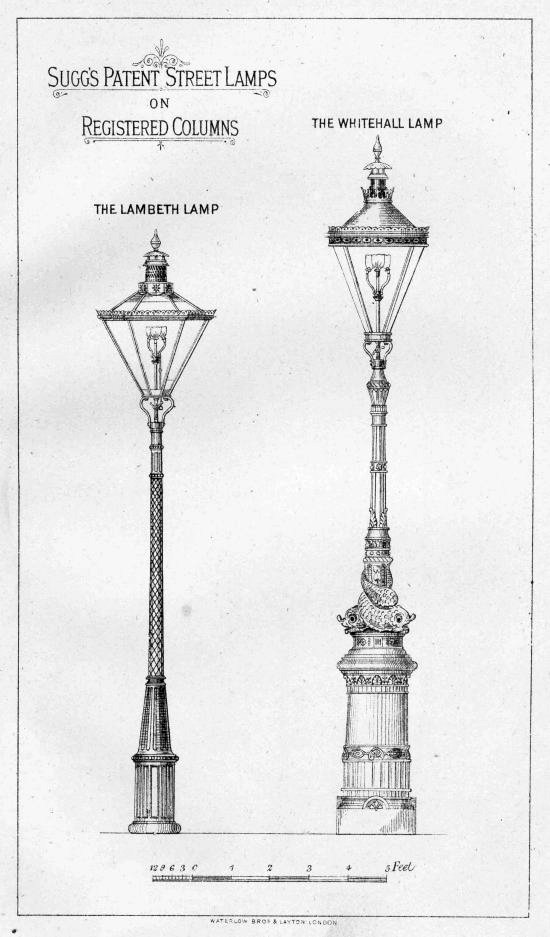
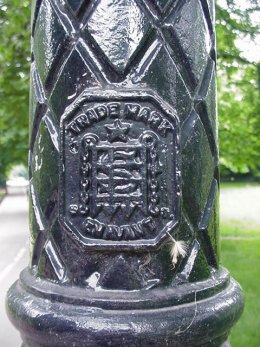
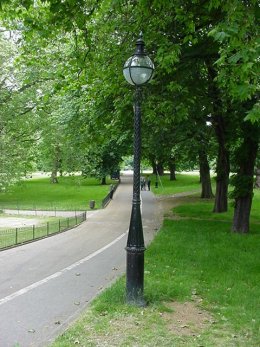
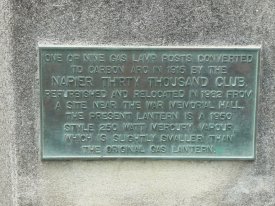
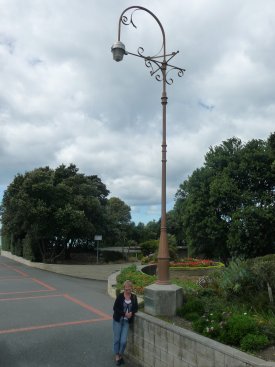
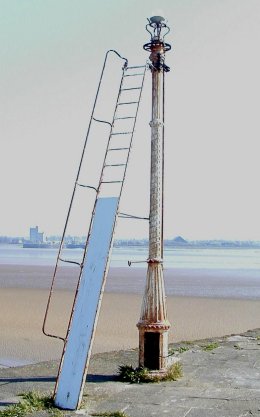
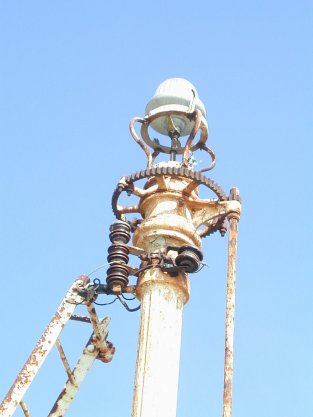
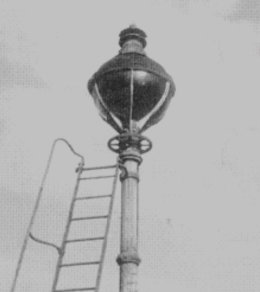
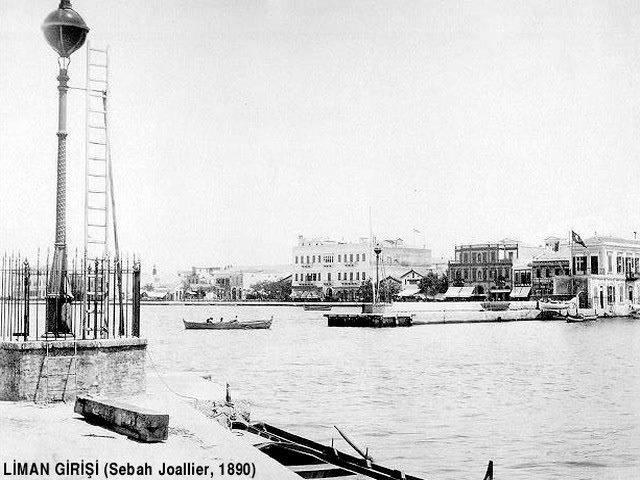
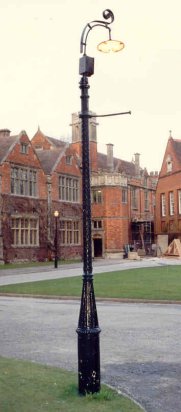
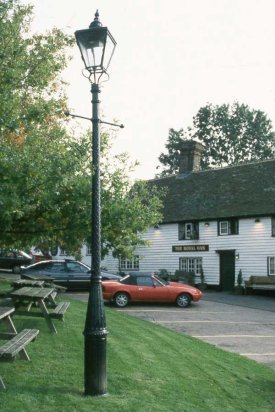
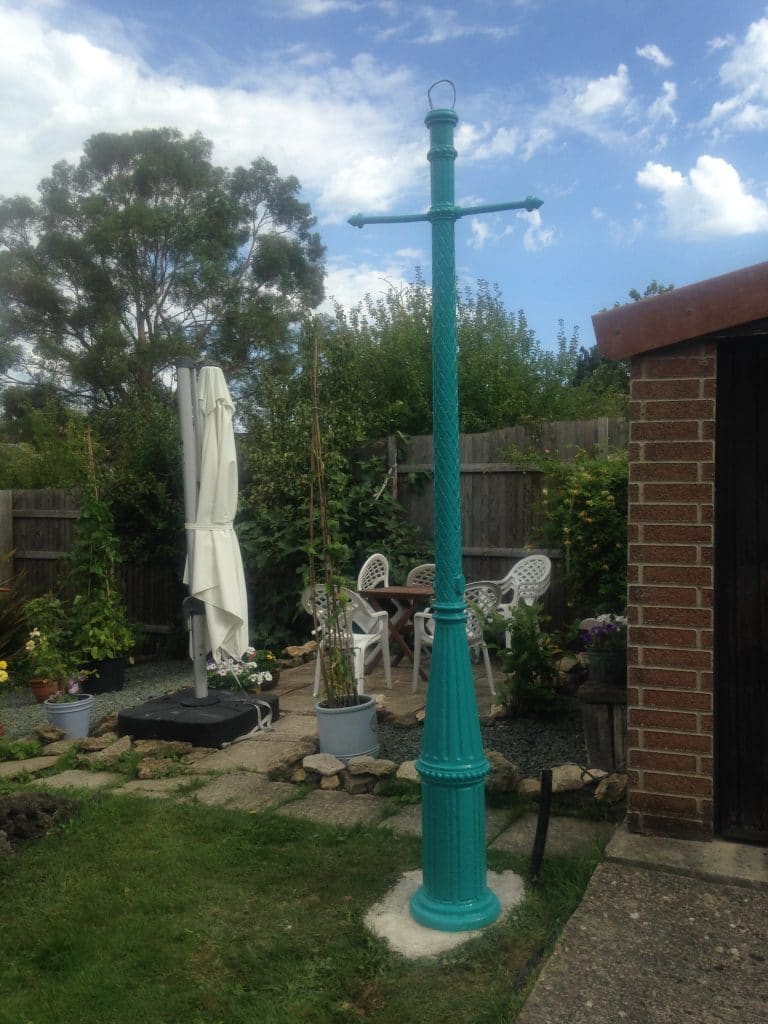
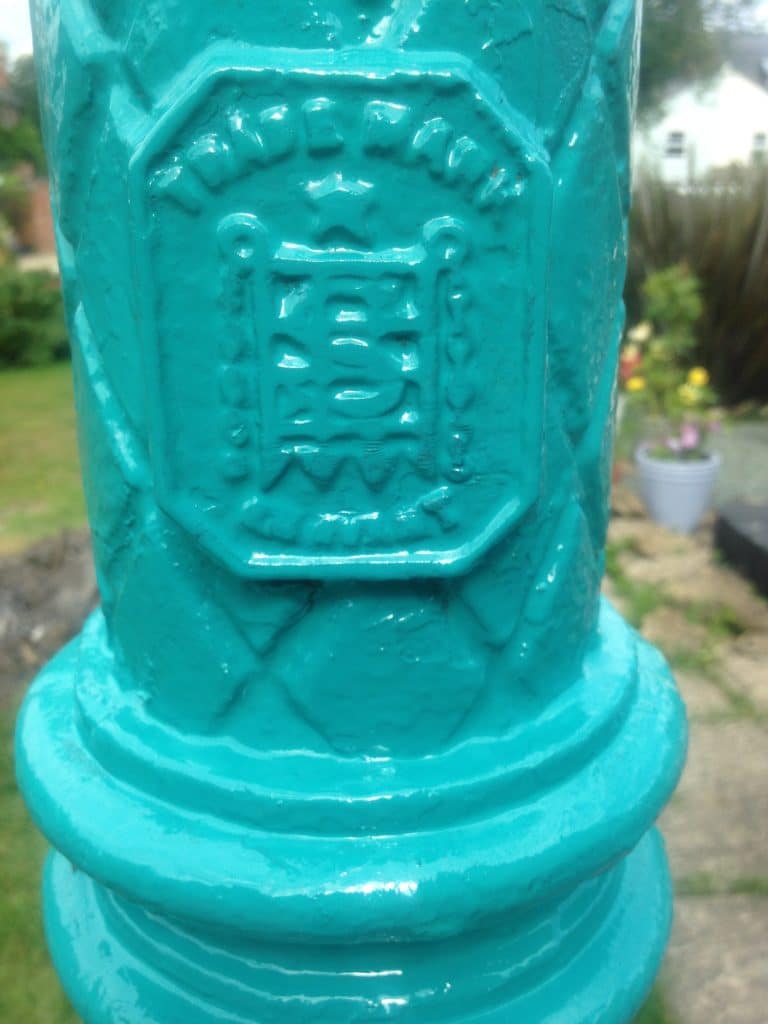
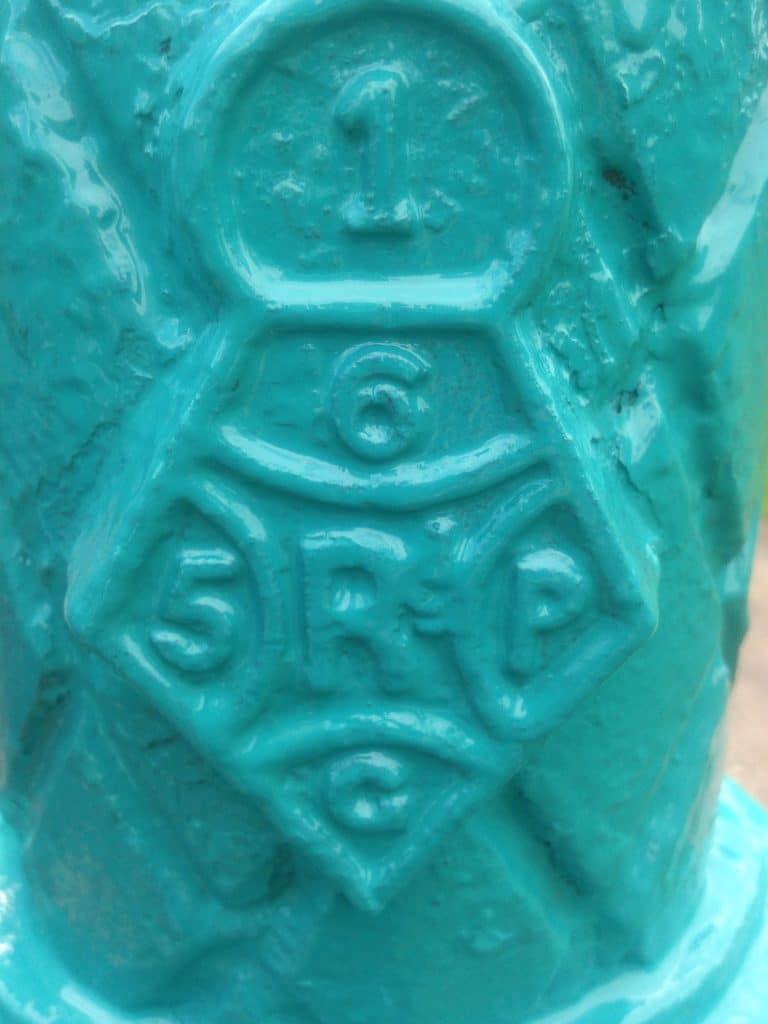
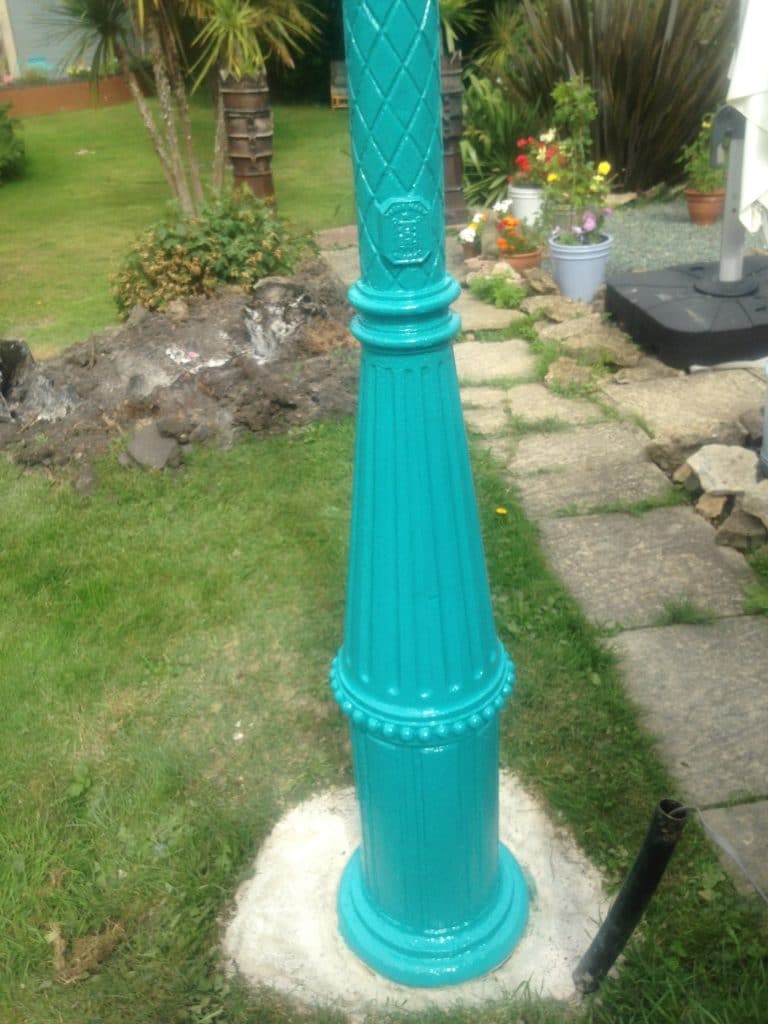
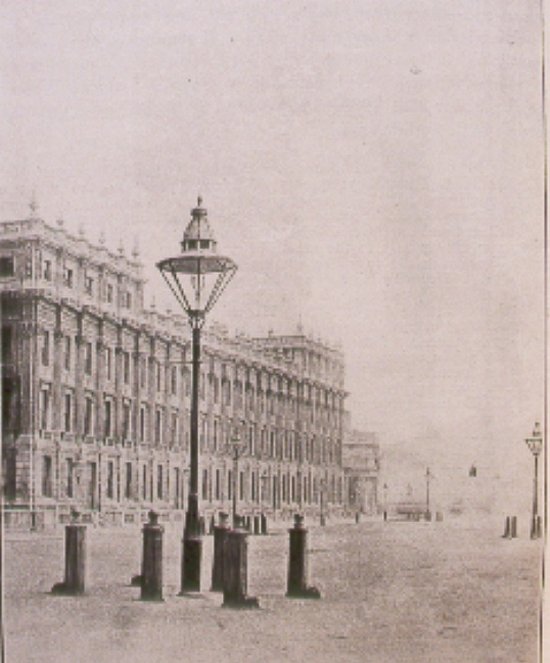
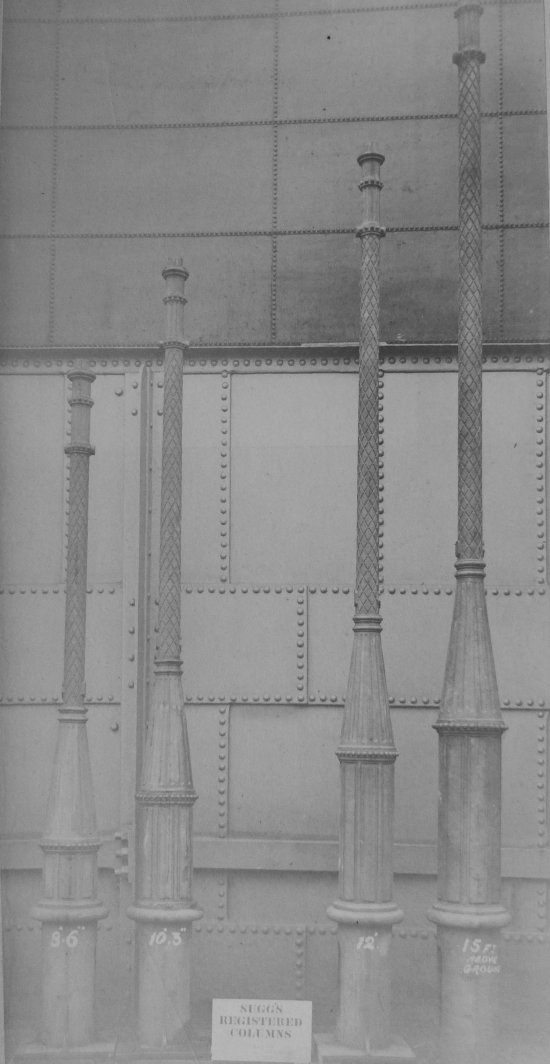
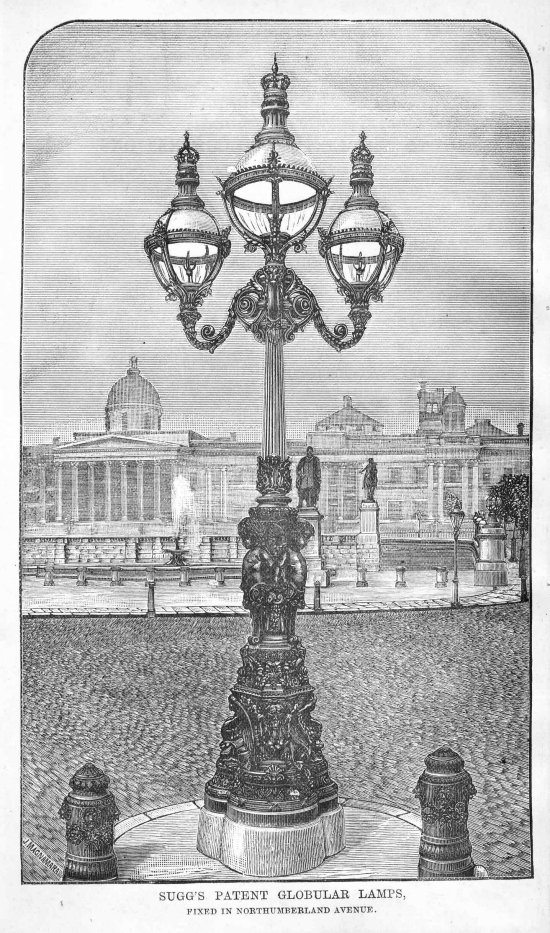
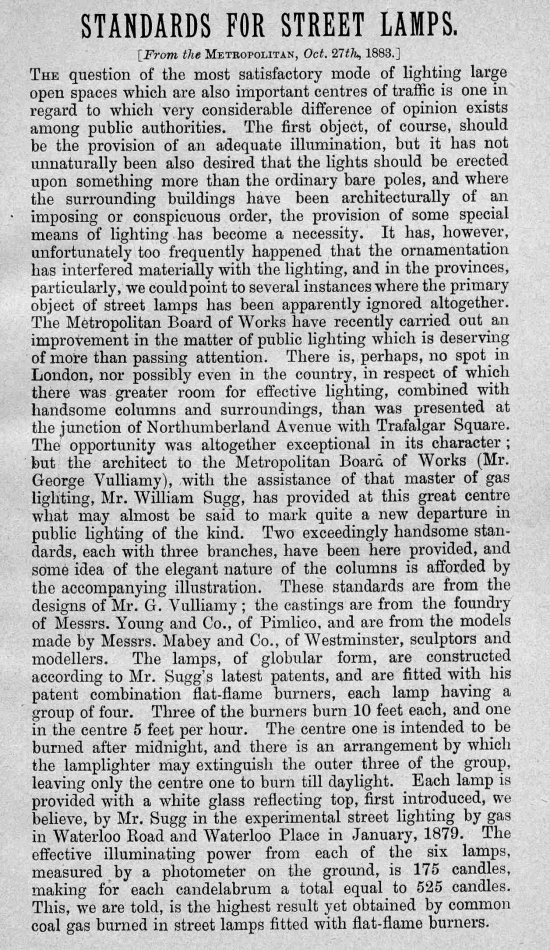
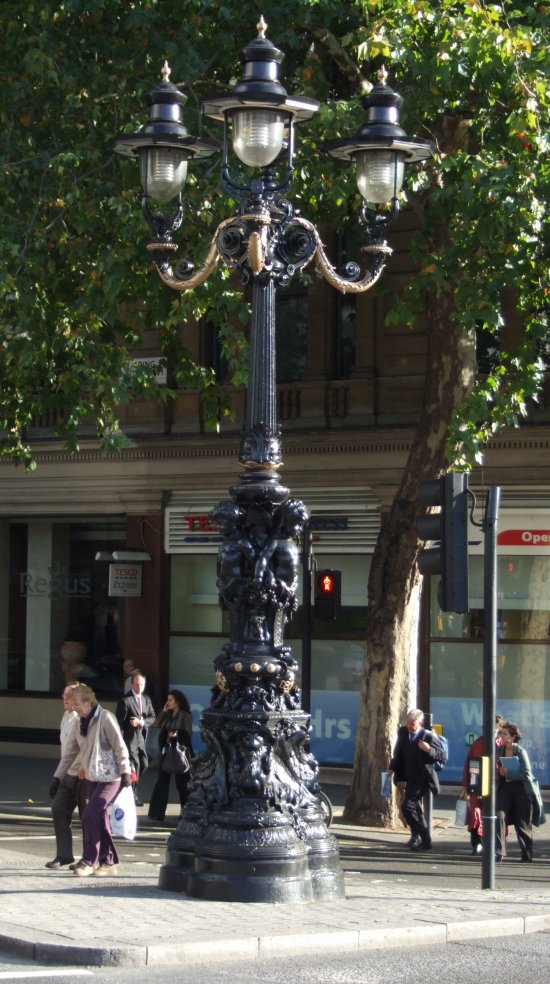
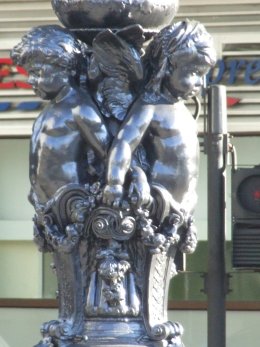
18 responses
We have come into possession a large lantern with column ( stamped The Thames Bank Iron Company Limited, dated 1882)
We have a 3 prong frog, a circular fairly flat slight curve to a knob with circular ring for the top and an electric screw in adapter.
I have tried to source a photo of similar age because I believe there should be another piece for the top either flat or dish shaped with an edge? Lamp has C. Crastin 1882 enscribed on small opening.
Thank you if you can offer any insight, Cheryl wylie
Hello Cheryl, The column is clearly original – I have one from the same foundry in my garden. The lamp on the other hand has me fooled! To be fair it is quite difficult to describe lanterns if you have not done it before! What I can glean from your description is that you have a 3 leg frog which was used on round lamps such as the Grosvenor. The body of these lamps tapers outwards like a cone often to a diameter of 17″. It then has a ‘tent’ which sits on the frame tapering sharply to the middle where the chimney arrangement is attached. There is a clear picture of the Grosvenor in the section called ‘Location Pictures’. If you count down picture 14 shows a 17″ Grosvenor with Tower Bridge immediately behind. The best thing you could do is send me a photo. I have no record of C.Crastin and it is unusual to have dates on lamps but I am happy to see if a photo will help. Just attach it to my email address and I will get back to you. Regards, Chris
For what it’s worth, a quick google shows Lyndley Harbour to be behind set of lock gates, and showing the state of the gate (open/shut) at night seem like a fair purpose of for an ‘indicating’ lamp like that. The intermittent/irregular could also fit with the lighting ladder
Thanks Shane, that is the first helpful comment on what is an unusual use of an original Sugg column. Someone in the area must know the whole story??
Hi there, i have found the base of an old lantern in my garden. I am keen to date it… Would you be able to help if i sent photos?
Send the picture to my email address and I will see what I can tell you!
I have an original 10,3 lamp post which is the lambeth which is as the photo of 4 columns ,I could send pictures if required, not sure if its 1851 or 1877 as the year letter is P
Hello Nigel,
Do you have a post and a lantern? I understand that you have the 10ft 3inch version of this very popular post but you mention the Lambeth which was also a very popular lantern but, like most copper lanterns of this age they have not survived. I am not sure how you have come up with a date. These items are likely to be closer to 1900. Do please send me a picture to the email address on the left. Chris
I only have the post , not the lamp. I am putting a hand made Windsor lamp made by L . Harrison of Lancashire on it as this will be my preference over the Globe type.
I hope you have a suitably sized one. At 10ft it should be 16″ across. There is a great temptation for people who see original lamps at ground level to say they are enormous when in fact they are the right size for both being a gas lamp and being seen at a height! You can still get a Windsor lamp from the current William Sugg company.
I have got the dates from the national archives.gov.uk. the post has a diamond marking code cast in it when it was made. photos to follow.
I look forward to seeing them!
I notice that the picture of the four lamps with the sizes at the bottom do not have four cut out oblong shapes out of the bottom part which is below ground level. I can see at least one on the pictures, Mine has four. I assume its because they were there to enable gas to be piped in from any direction. your thought s please . Do you have a date for that picture ?
As they had their own foundry castings could be made or altered as required. The picture comes from a number of album pages – now loose that carry many photos of equipment of the time which I have called 1880’s collection. In fact all those posts in the picture have the more usual single slot running left to right as it were. Yes, the pipework would frequently pass right through with a ‘tee’ to feed up to the lamp. I guess that a 4-way slot might have been used at a complicated junction where perhaps a feed had to go to another lamp at right angles or round the corner. Pretty subtle but if you look closely you can see lugs for the ladder bars and these are in line with the slots in the root reminding us that lamposts were mounted with the ladder bars parallel to the road to avoid hitting tall vehicles and to allow the lamplighter to rest his ladder fully on the pavement!
I have some pictures of the lamp post, in the Portmerrion colour , Jade. It was made on the same day and date of the post at Canterbury Cathedral, the Farrar lamp which has a dedication added to that lamp post at a much later date.
how can I upload the pictures to you ?
Nigel, if they are not too large just attach them to an email to ch***@*******************co.uk and they will get directly to me. If they are in total more than 20MB you can send them by We Transfer for free. Any problem, send one at a time! Look forward to seeing them thank you, Chris
For those following this story, Nigel sent me some great photos that I have added to the website along with a the story of the diamond registered design. Go to
https://williamsugghistory.co.uk/?page_id=63
Hi there,
I have recently purchased and installed a cast iron lamppost with sugg clearly marked at the base of the post.
I am trying to find out and identify if this is an original post or maybe a reproduction but am unsure of how I can find this information?
It does have a welded flange/steel plate at the bottom rather than the large cement in base, but again not sure if this is something that has been retrofitted afterwards.
I will happily send over some photos if this helps if you can let me know where & how to send them?
Thanks in advance for your help and look forward to hearing back soon.
Sorry for delay in responding. Is it cast iron or possibly aluminium which we used for many posts and are much easier to handle. Many of the posts had cast flanged bases rather that roots. If you woulod like to send e a picture I will try to help you out.Send to ch***@*******************co.uk
Regards,